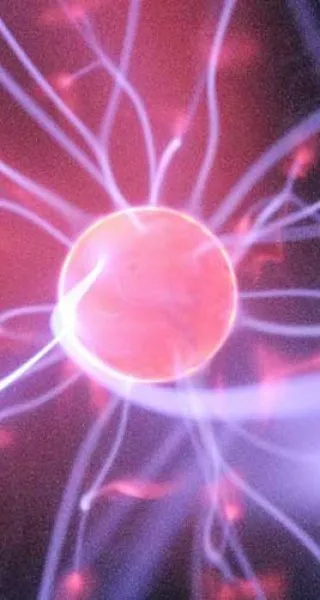Transcranial magnetic stimulation (TMS) therapy is gaining recognition as a legitimate and highly effective treatment for mental illness and substance abuse. TMS is approved by the Food and Drug Administration (FDA) for the treatment of obsessive-compulsive disorder (OCD) and major depression. There is strong evidence displaying the important role of TMS therapy in the treatment of anxiety disorders, post-traumatic stress disorder (PTSD), and substance use disorders.
What is TMS?
Transcranial magnetic stimulation (TMS), also sometimes referred to as rTMS (repetitive transcranial magnetic stimulation) is a treatment modality that works by delivering magnetic pulses to stimulate nerve cells in specific brain regions. It is a non-invasive outpatient procedure that involves passing gentle magnetic pulses through a magnetic coil along the surface of the skull.
These pulses stimulate certain areas of the brain and enhance brain activity, usually within the dorsolateral prefrontal cortex (DLPFC). In general, pulses at a lower frequency have a calming effect on brain activity, and higher frequency pulses increase brain activity. Carefully managing these changes is what impacts mood and behavior.
How Does TMS Work?
TMS treatment is still not widely offered, and is less well-known and understood than traditional substance abuse and mental health treatments, leaving many people wondering: how does TMS work?
TMS therapy works through brain stimulation. Very small electrical currents activate cells with magnetic energy, through magnetic fields that are similar to those produced by a magnetic resonance imaging (MRI) machine. However, unlike magnetic resonance imaging, the magnetic field does not affect the whole brain. With repetitive TMS, the electrical currents activate cells in the left prefrontal cortex in particular, as this is the area of the brain involved in mood regulation. It is thought that these electrical currents activate brain cells that control mood as they release neurotransmitters such as dopamine, serotonin, and norepinephrine.
Major depressive disorder, bipolar disorder, and obsessive-compulsive disorder are both thought to be linked to an imbalance of one or more of these chemicals in the brain. By stimulating the cells that release neurotransmitters responsible for the imbalance in a patient’s brain, TMS can restore balance, providing symptom relief and improving mood regulation.
Why Does TMS Work?
There is still some research to be done to increase our understanding of exactly why TMS therapy is effective.
When is TMS Used?
rTMS therapy is often used when traditional treatments such as medication and talking therapy are not producing the desired effect. Although antidepressant medications can relieve depression and improve the quality of life for many individuals, some people experience medication-resistant depression. TMS treatments offer an alternative approach to treating depression and reducing depression symptoms.
What Happens During a TMS Procedure?
The question, “how does TMS work?”, is often combined with the curiosity of what exactly happens during an rTMS treatment session.
Firstly, you will be invited into a treatment room where a technician (a doctor or other healthcare professional) will provide you with earplugs. These serve the sole purpose of blocking out the clicking noise from the magnetic impulses that may be uncomfortable.
You will then be invited to sit down in a reclining chair for the remainder of the session. During your initial TMS therapy session, the technician measures your head to adjust where they put a magnetic coil called the treatment coil.
The technician will then begin the treatment, switching the TMS therapy system on and off repeatedly to produce impulses. As the treatment starts, you will begin to hear a clicking sound, which is made when the magnetic pulse is released, sending electrical currents into the brain through the treatment coil. Some patients report feeling a tapping sensation under the treatment coil as part of the process called mapping. The magnetic fields extend only two to three centimeters into the brain, directly beneath the treatment coil.
The technician will conclude the level of magnetic energy required to be released through the electromagnetic coil by gradually increasing the dose until they determine your motor threshold, often marked by the twitching of your fingers or hands. The motor threshold is an important reference point for gauging the correct dose for each individual.
How Long Is A Repetitive Transcranial Magnetic Stimulation Procedure?
TMS treatment sessions will generally last between thirty minutes and one hour, with slightly more time required in the first session than in consecutive treatment sessions to set up the TMS therapy system for your needs.
TMS therapy is non-invasive and does not involve surgery or anesthesia. Patients treated with TMS can generally continue their day as normal after treatment, completing tasks and returning to work, school, or family requirements without disturbance.
Who Cannot Get TMS Therapy?
Approved by the FDA, TMS does not generally cause severe side effects, and, in comparison to electroconvulsive therapy, is less invasive and suitable for more people. However, there are some individuals who should avoid TMS therapy. Despite the electromagnetic coil producing only very small electrical currents, the magnetic fields from the TMS therapy system can be dangerous for individuals with some form of metal implants in their heads. This includes:
- deep brain stimulators
- electrodes
- permanent piercings
- neck or brain stents
- aneurysm clips or coils
- shrapnel or bullet pieces
- facial tattoos with metallic ink
- metal plates
- cochlear implants
You should always speak to a medical professional, and disclose any object implanted in your head before commencing treatment.
Who Will Benefit The Most From Transcranial Magnetic Stimulation?
TMS therapy has been studied predominantly as a treatment to relieve depression, showing an incredibly promising success rate of between 30-64 %.
Various studies have also documented TMS having a significant improvement in anxiety, and there are currently clinical trials studying the effectiveness of TMS in conditions like PTSD, bipolar disorder, and pediatric depression – for which antidepressant medications may cause worsened side effects.
Contact Us
At GIA Chicago, we understand how debilitating and isolating depression and other mental illnesses can be, and that’s why we have put all of our care into creating a safe, comfortable space for healing. With compassionate, expertly trained professionals to help and guide you through the process, we are dedicated to ensuring your treatment and recovery are manageable, empowering, and the right fit for you.
If you are ready to begin your healing journey, contact GIA Chicago for a free consultation and ask any further questions you may have about TMS treatment.





